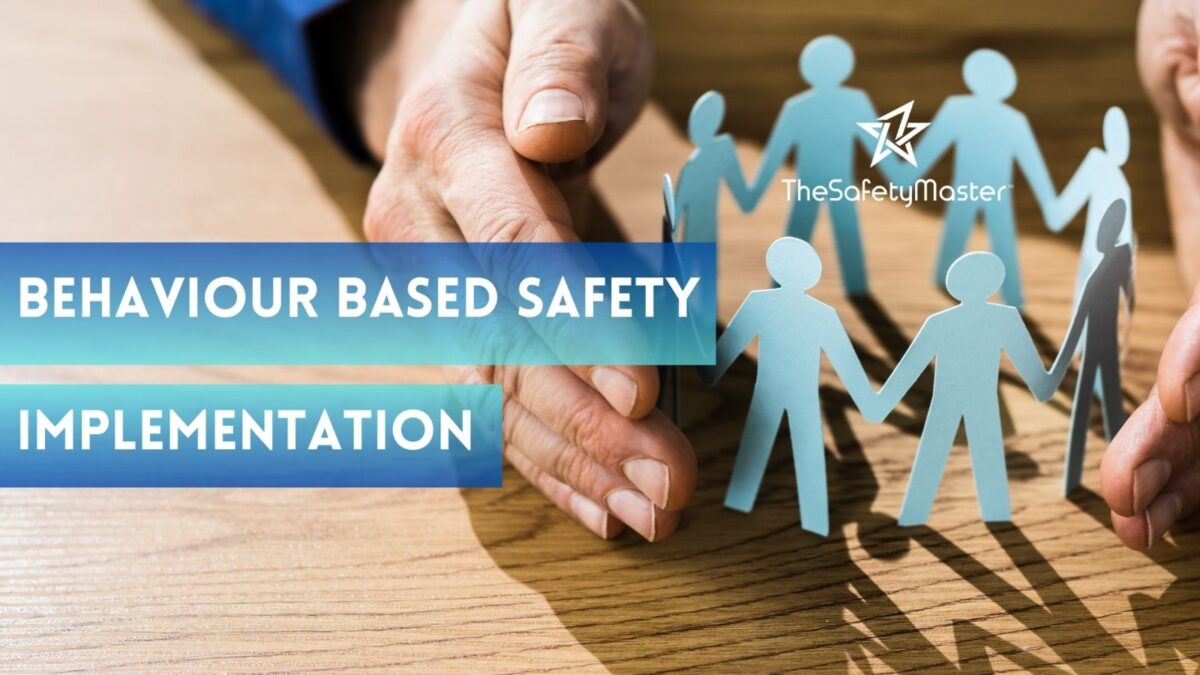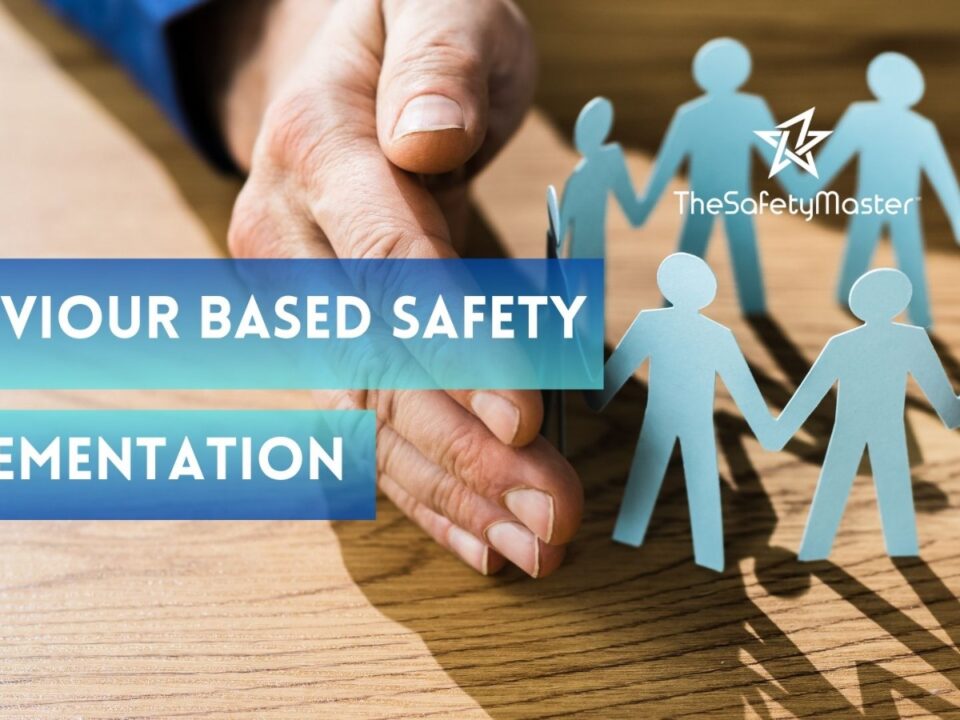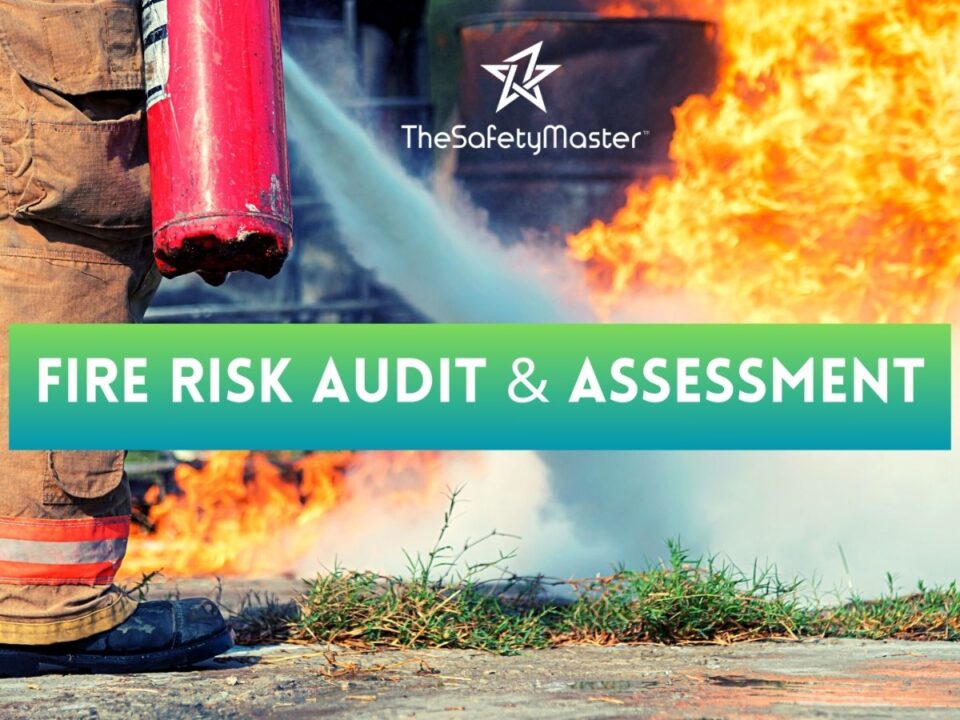Maximizing Safety Performance: How Behaviour-Based Safety Implementation Can Drive Results

Beyond Compliance: Why Manufacturing Industries Should Embrace Behaviour-Based Safety Implementation Programs
February 20, 2025
Integrating Fire & Life Safety Audits into Your Building’s Safety Management Plan
February 22, 2025In this article, we will delve into the intricacies of maximizing safety performance within a workplace setting. As safety remains a paramount concern for organizations, implementing behaviour-based safety strategies has emerged as a powerful solution to drive tangible results. By understanding the vital role that human behaviour plays in safety outcomes, businesses can create a culture of safety that transcends traditional protocols and yields lasting improvement. Join us as we explore the potential of behaviour-based safety implementation, offering insights, tips, and strategies to elevate safety standards and create a thriving work environment. Unleash the true potential of your safety program, and witness the remarkable transformation it can bring.
Introduction
Picture this: a world where every workplace is free from accidents and injuries, where employees feel safe and secure, and where productivity soars to new heights. While this may seem like an elusive dream, it is indeed possible to achieve such a reality. In the realm of occupational health and safety, maximizing safety performance is a paramount goal for organizations across various industries. In this enlightening article, we will delve into the fascinating realm of behaviour-based safety implementation and explore its profound impact on driving stellar results in workplace safety. We will uncover the key factors that contribute to an effective program, discuss strategies for overcoming challenges, and highlight the importance of measuring and evaluating safety performance
Understanding Behaviour-Based Safety Implementation
Behaviour-Based Safety (BBS) is a proactive approach to enhancing safety performance by focusing on human behaviour and its influence on workplace safety. It involves the systematic observation and analysis of employee behaviours to identify potential risks and implement appropriate interventions. BBS recognizes that creating a safe working environment requires more than just relying on rules and regulations; it emphasizes the importance of individuals taking personal responsibility for their own safety and the safety of others.
The underlying principle of BBS is that behaviour is learned and can be modified through positive reinforcement. By understanding why employees behave in certain ways, organizations can develop strategies to reinforce safe behaviours and discourage unsafe ones. This approach considers not only the actions taken by employees but also the factors that contribute to those actions, such as work environment, training, supervision, and motivation.
Implementing BBS involves a comprehensive process that starts with clearly defining core values and expectations regarding safety. It includes establishing effective communication channels to ensure all employees are aware of what is expected from them in terms of safe behaviour. Training programs are then developed to educate employees about the importance of BBS, providing them with the knowledge and skills necessary to actively participate in creating a safer workplace.
By embracing BBS principles, organizations can foster a culture where safety becomes an integral part of everyday operations. This approach empowers employees by engaging them in identifying potential hazards, reporting near misses, and taking ownership for maintaining a safe work environment. Ultimately, understanding behaviour-based safety implementation not only enhances individual well-being but also drives overall organizational success by reducing accidents, increasing productivity, and fostering positive morale among workers.
The Importance of Safety Performance
The Importance of Safety Performance: Safety performance is not merely a checkbox on a company’s to-do list; it is an essential aspect that reverberates across the entire organization. Every employee, from workers on the frontline to top-level management, must recognize that safety is not an option but a fundamental value that must be upheld at all times. The significance of safety performance lies in its ability to safeguard human lives, protect physical assets, and nurture a positive work environment.
When safety performance is prioritized, it becomes the backbone of a thriving organization. It fosters trust among employees, instils confidence in clients and stakeholders, and promotes overall productivity. By creating a culture of safety excellence, companies can reduce workplace accidents, minimize downtime due to injuries or equipment damage, and enhance employee morale. Ultimately, this leads to higher job satisfaction levels and increased employee engagement – key factors for success in any industry.
Remember: Safety should never be an afterthought but rather an integral part of every decision-making process within an organization. By embracing the importance of safety performance wholeheartedly and integrating it into daily operations, companies can reap the benefits of reduced incidents, improved reputation in the market, and most importantly – ensuring that every individual returns home safely at the end of each workday.
Identifying Key Factors for Maximizing Safety Performance
Identifying Key Factors for Maximizing Safety Performance: In the pursuit of maximizing safety performance, it is crucial to identify the key factors that contribute to a safe working environment. One such factor is effective communication. Establishing clear lines of communication ensures that safety policies, procedures, and expectations are effectively conveyed to all employees. This allows for a shared understanding of safety protocols and fosters a culture of awareness and accountability.
Another vital factor is fostering employee engagement. When employees feel valued and engaged in the safety process, they are more likely to take ownership of their own safety and that of their colleagues. Encouraging active participation through involvement in safety committees, feedback sessions, and recognition programs not only enhances employee morale but also strengthens the overall commitment towards maintaining a safe workplace.
Additionally, regular training and education play an essential role in maximizing safety performance. By providing comprehensive training programs tailored to each job function, employees gain the necessary knowledge and skills to identify potential hazards, mitigate risks, and respond appropriately in emergency situations. Continuous education ensures that employees stay updated on best practices and technological advancements in safety measures, further enhancing their ability to create a secure work environment.
By focusing on effective communication strategies, fostering employee engagement, and investing in regular training initiatives, organizations can identify these key factors as catalysts for maximizing safety performance. Proactive efforts will result in a workplace where individuals prioritize their own well-being as well as that of their colleagues—a true testament to an organization’s commitment towards ensuring a safe working environment for all
Developing a Behaviour-Based Safety Program:
Creating an effective behaviour-based safety program requires careful planning and implementation. The program should be tailored to the specific needs and challenges of the organization, fostering a culture of safety that permeates all levels. First, establish clear goals and objectives, outlining the desired outcomes and metrics for success. This sets the foundation for measuring progress along the way. Next, conduct a comprehensive assessment of current safety practices and procedures within the organization. Identify potential hazards and risks, examining both physical conditions and human factors that may contribute to incidents. Engage with employees at all levels to gain insights into their perceptions of safety, encouraging their active participation in shaping the program.
Once potential risks have been identified, develop strategies for mitigating them effectively. This may involve implementing engineering controls, providing appropriate personal protective equipment (PPE), and establishing safe work procedures. Additionally, incorporate training programs that educate employees on recognizing hazards, promoting safe behaviours, and reporting near-misses or incidents promptly.
To ensure sustainability, consistent monitoring is vital. Regular assessments should be conducted to gauge adherence to established safety protocols and identify areas for improvement. Foster open communication channels where employees can report concerns or suggest safety enhancements without fear of reprisal.
By developing a robust behaviour-based safety program rooted in collaboration and continuous improvement, organizations can create safer work environments while fostering a sense of collective responsibility among their workforce. Remember: a culture of safety not only protects employees but also contributes to increased productivity and overall organizational success.
Conducting Behaviour Observations
Conducting Behaviour Observations: In order to maximize safety performance, it is crucial to implement a systematic approach for conducting behaviour observations. This process involves trained observers carefully observing and documenting employee behaviours related to safety on a regular basis. By closely monitoring these behaviours, organizations can gain valuable insights into their safety culture and identify areas for improvement.
During behaviour observations, observers should focus on both safe and at-risk behaviours. They should take note of actions that align with established safety protocols and those that deviate from them. By capturing data on both positive and negative behaviours, organizations can develop a comprehensive understanding of their safety performance.
Creating an environment of trust and support is imperative during behaviour observations. Employees should feel encouraged to report any unsafe or risky behaviours they witness, without the fear of retribution. This fosters open communication and allows for effective intervention strategies to be implemented promptly.
By conducting thorough behaviour observations, organizations can identify trends, patterns, and potential hazards that may contribute to accidents or incidents in the workplace. This knowledge empowers leaders to develop targeted interventions, provide timely feedback, and reinforce desired safe behaviours. Ultimately, this holistic approach not only improves safety performance but also cultivates a culture where employees feel valued and motivated in their commitment towards maintaining a safe working environment.
Analysing and Interpreting Data
Analysing and Interpreting Data: As we delve into the realm of behaviour-based safety implementation, it becomes paramount to analyse and interpret the data gathered from behaviour observations. This crucial step allows us to uncover valuable insights and patterns that can drive improvements in safety performance.
When analysing the data, we meticulously examine various factors such as the frequency and severity of unsafe behaviours, as well as the occurrence of positive safe behaviours. By carefully scrutinizing this information, we can identify trends that highlight areas of strength or weakness within an organization’s safety culture. This analysis enables us to pinpoint specific actions or interventions that may be necessary for enhancing safety outcomes.
Interpreting the data goes beyond simple number crunching; it involves deep understanding and contextualization. We must go beneath the surface numbers and seek to comprehend the underlying motivations behind certain behaviours. By doing so, we are able to put ourselves in the shoes of individuals performing these actions, enabling us to develop targeted strategies for intervention and improvement.
By approaching data analysis with an optimistic perspective, we unlock opportunities for growth and progress. Each piece of information reveals a story waiting to be told – a story that empowers organizations to proactively address safety concerns, foster a culture of accountability, and ultimately create a work environment where every individual feels empowered to prioritize their own safety and that of their colleagues.
Providing Feedback and Reinforcement
Providing Feedback and Reinforcement: In the realm of behaviour-based safety implementation, the significance of providing feedback and reinforcement cannot be overstated. This crucial step ensures that employees receive recognition for their safe behaviours while also addressing any areas that need improvement. When delivering feedback, it is essential to focus on specific actions rather than generalizations, as this allows individuals to clearly understand what they are doing well and where adjustments can be made. Constructive feedback should involve a two-way dialogue, fostering open communication channels and encouraging employees to share their thoughts and concerns regarding safety practices.
Reinforcement plays a pivotal role in strengthening safe behaviours within an organization. By rewarding individuals who consistently exhibit safe habits, companies can cultivate a positive safety culture that permeates throughout the workforce. Reinforcement strategies can vary from verbal praise and recognition programs to tangible incentives such as bonuses or time off. It is crucial for organizations to tailor their reinforcement methods to suit their unique work environments while ensuring fairness and transparency in the process.
Creating an atmosphere of continuous improvement through feedback and reinforcement not only boosts safety performance but also enhances overall employee satisfaction. Recognizing individuals’ efforts fosters a sense of pride in their work while motivating others to actively engage in safe practices. Ultimately, by acknowledging achievements and reinforcing desired behaviours, organizations pave the way for sustained success on the path towards maximizing safety performance.
Engaging Leadership Support
Leadership plays a critical role in driving safety performance within an organization. When leaders actively support and promote behaviour-based safety implementation, it sets a powerful precedent for employees at all levels. By embracing safety as a core value and consistently demonstrating their commitment, leaders create a culture of accountability and encourage employees to prioritize safety in their everyday actions. One effective way to engage leadership is by fostering open communication channels. This can be achieved through regular safety meetings where leaders provide updates, share success stories, and address any concerns or challenges encountered during the implementation process. By actively listening to employee feedback and involving them in decision-making processes, leaders not only demonstrate their dedication but also empower the workforce to actively contribute to improving safety performance.
Furthermore, leaders can lead by example through visible participation in behaviour observations themselves. By joining frontline workers in observing behaviours and providing constructive feedback, leaders show their genuine interest in understanding the challenges faced on the ground level. This hands-on approach fosters trust and reinforces the message that everyone is accountable for maintaining a safe work environment.
Ultimately, engaging leadership support goes beyond mere lip service; it requires genuine commitment and active involvement from top-level management. When employees see that their leaders are invested in promoting safety performance through behaviour-based approaches, they are more likely to embrace these initiatives wholeheartedly, leading to increased motivation, improved compliance with safety protocols, reduced incidents, and ultimately creating an environment where every employee feels valued and protected.
Training and Education on Behaviour-Based Safety
Training and Education on Behaviour-Based Safety: As organizations strive to maximize safety performance, providing comprehensive training and education on behaviour-based safety is crucial. This ensures that employees have the knowledge and skills necessary to uphold a strong safety culture. Training programs should cover various aspects, including understanding the principles of behaviour-based safety, identifying behaviours and their impact on safety outcomes, and implementing effective corrective measures.
A thought-provoking content: Imagine a workplace where every employee is equipped with the tools to recognize unsafe behaviours and make informed decisions that prioritize safety. Through engaging training sessions, employees can develop a deep understanding of how their actions directly contribute to overall safety performance. They learn not only how to observe and identify at-risk behaviours but also how to intervene effectively and encourage safer alternatives.
To truly instil a sense of ownership in every individual, education on behaviour-based safety should extend beyond theoretical knowledge. Practical exercises, role-playing scenarios, and real-life case studies can be incorporated into the training curriculum. By simulating potential workplace hazards or analysing past incidents, employees can actively apply their learning in a safe environment. Such interactive approaches enhance comprehension while fostering problem-solving skills that promote continuous improvement.
Ultimately, investing in comprehensive training and education on behaviour-based safety empowers employees to become advocates for safe practices throughout the organization. With thorough knowledge of the principles behind behavioural change and practical experience in identifying potential risks, individuals are better equipped to influence positive change within their teams. By fostering a culture that values ongoing learning and development in this area, organizations can create an environment where everyone actively contributes towards maximizing safety performance with confidence and enthusiasm.
Overcoming Challenges in Implementing Behaviour-Based Safety
Overcoming Challenges in Implementing Behaviour-Based Safety: Navigating the implementation of behaviour-based safety programs can present various challenges that organizations must be prepared to face. One significant hurdle is resistance to change, as employees may be resistant to altering their established habits and routines. This challenge can be addressed through effective communication and education, highlighting the benefits and positive impacts of behaviour-based safety on both individual and collective well-being. By emphasizing the importance of creating a safer work environment, employees can be encouraged to embrace change with an optimistic outlook.
Another common challenge is sustaining employee engagement throughout the implementation process. To overcome this obstacle, organizations can foster a culture of accountability and ownership by involving employees in program development and decision-making processes. Engaging frontline workers through open dialogues, feedback mechanisms, and recognition programs helps create a sense of empowerment and investment in maintaining a safe work environment.
Additionally, resource constraints can pose significant challenges during implementation. Organizations should allocate adequate resources for training sessions, data collection systems, and ongoing program evaluation. By demonstrating commitment to providing necessary resources, management sends a powerful message about the importance of behavioural safety within the organization.
Overcoming these challenges requires perseverance, adaptability, and strong leadership support. With proper planning, effective communication strategies, employee involvement initiatives, resource allocation management, organizations can successfully implement behaviour-based safety programs that drive results while fostering an optimistic atmosphere focused on creating safer working conditions for all involved parties
Measuring and Evaluating Safety Performance
As we delve into the realm of measuring and evaluating safety performance, we are confronted with the fundamental question: how do we truly know if our efforts are making a difference? The answer lies in robust data analysis that unveils patterns, trends, and areas for improvement. By carefully examining incident reports, near misses, and safety observations, organizations can gain invaluable insights into their safety performance. This data-driven approach allows for targeted interventions that can further enhance safety outcomes. To effectively measure safety performance, it is crucial to establish key performance indicators (KPIs) that align with organizational goals. These KPIs can include metrics such as injury rates, lost time incidents, and near miss reporting frequency. Additionally, conducting trend analyses over specific time periods helps identify fluctuations in safety performance and highlights potential areas of concern or success.
But measurement alone is not enough; evaluation is equally vital. It involves assessing the effectiveness of implemented interventions and strategies in driving positive change. By evaluating various aspects such as leadership commitment to safety, employee engagement levels, and adherence to established protocols, organizations can gain a comprehensive understanding of their safety culture.
Ultimately, by measuring and evaluating safety performance using a data-driven approach, organizations can celebrate progress while also identifying opportunities for continuous improvement. This process fosters a sense of optimism within the workforce and reinforces the belief that working together to create a safe environment yields meaningful results – protecting employees’ well-being while ensuring organizational success.
Conclusion
In essence, the implementation of behaviour-based safety practices has demonstrated its immense potential in driving safety performance to new heights. By focusing on human behaviour and creating a culture of continuous improvement, organizations can cultivate safer work environments and reduce the risk of accidents. It is through the collective effort of every individual within an organization that a truly effective behaviour-based safety program can be established. As leaders embrace this approach and provide unwavering support, employees become more engaged and motivated to prioritize safety in their daily activities. Ultimately, the success and sustainability of such initiatives rely on fostering a shared commitment to safety, nurturing a proactive mind-set, and continuously refining processes for optimal performance. With determination and resilience, organizations can create a future where every worker returns home safely after each shift, instilling a sense of pride in achieving long-lasting positive impact.




